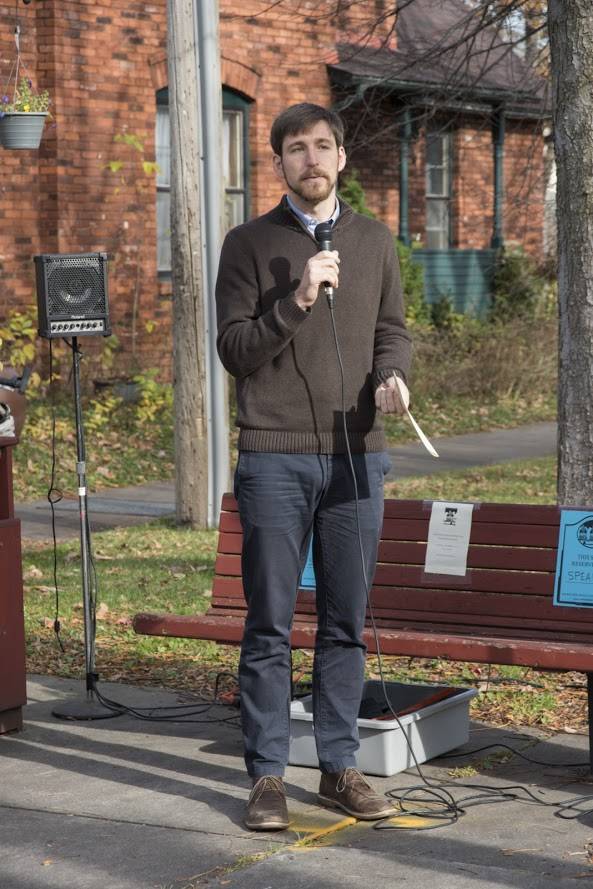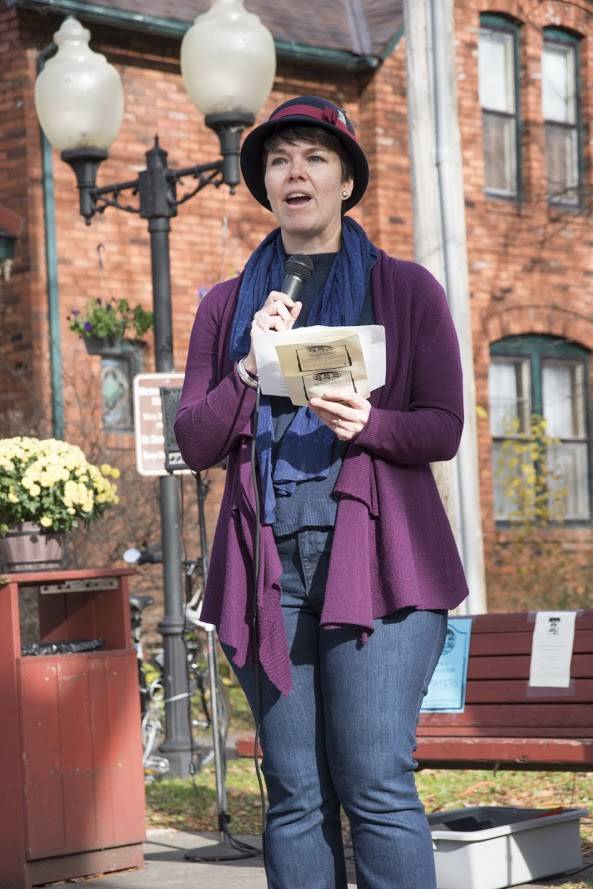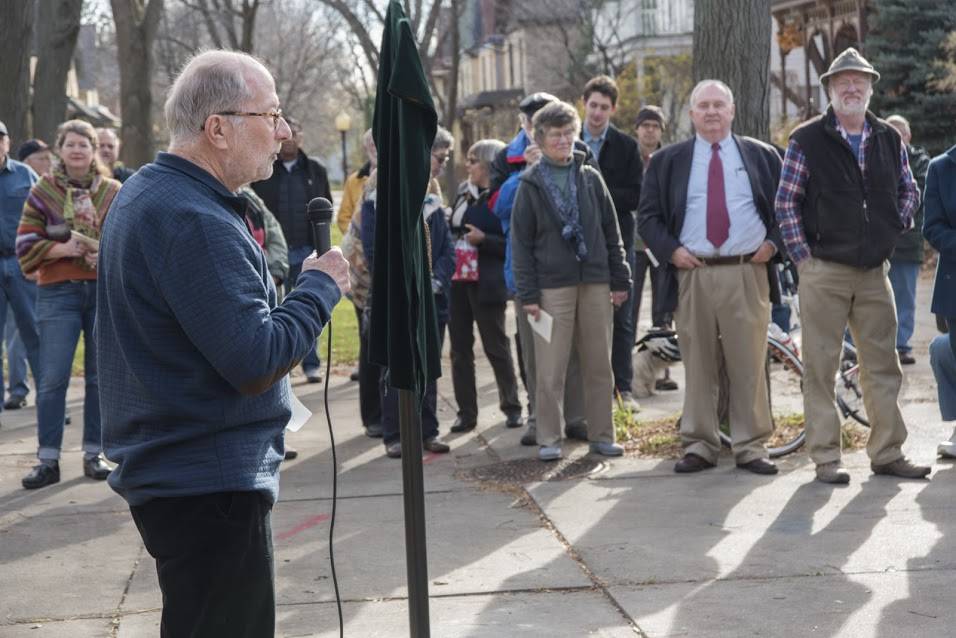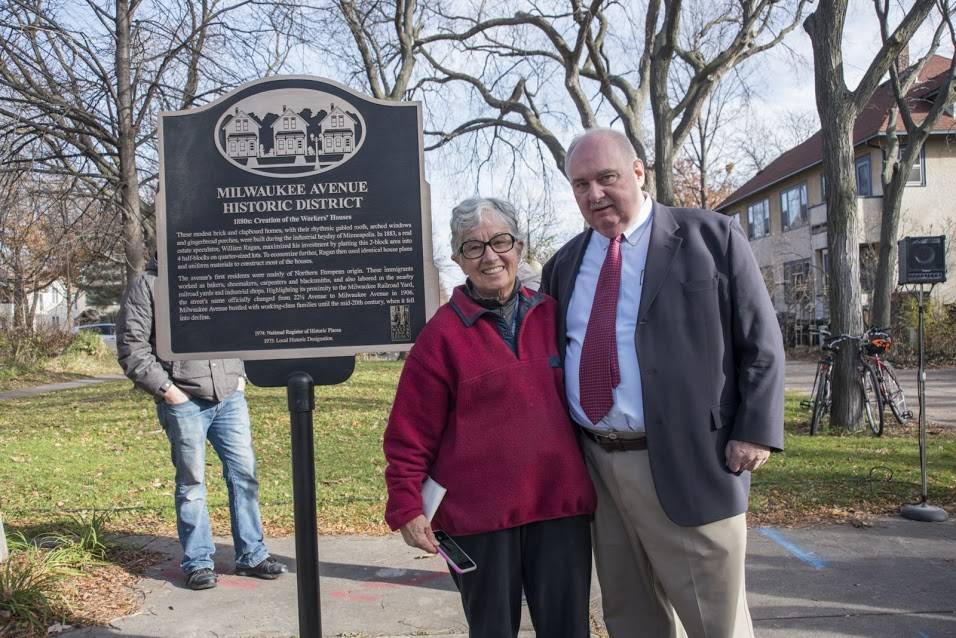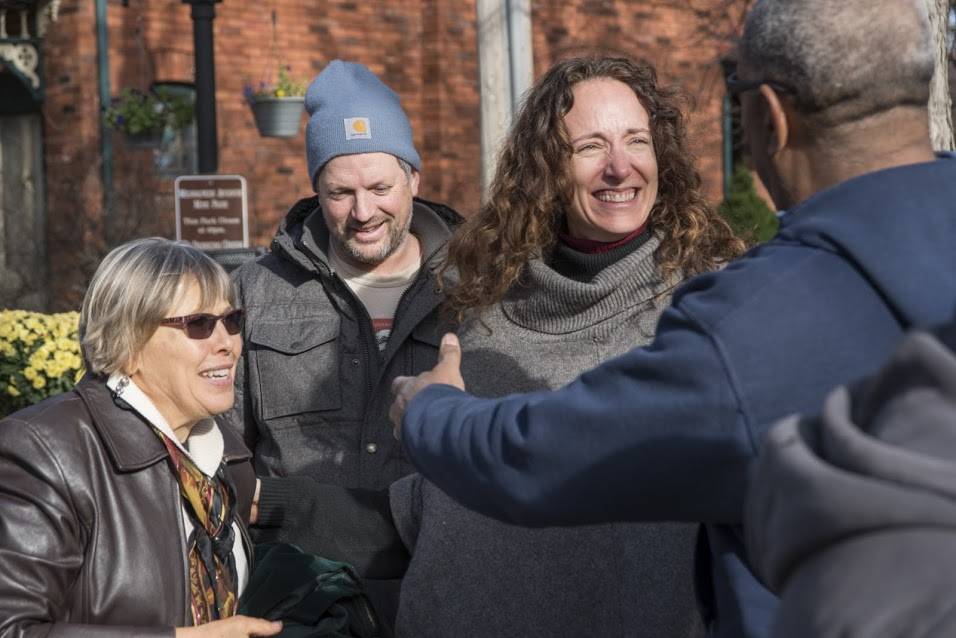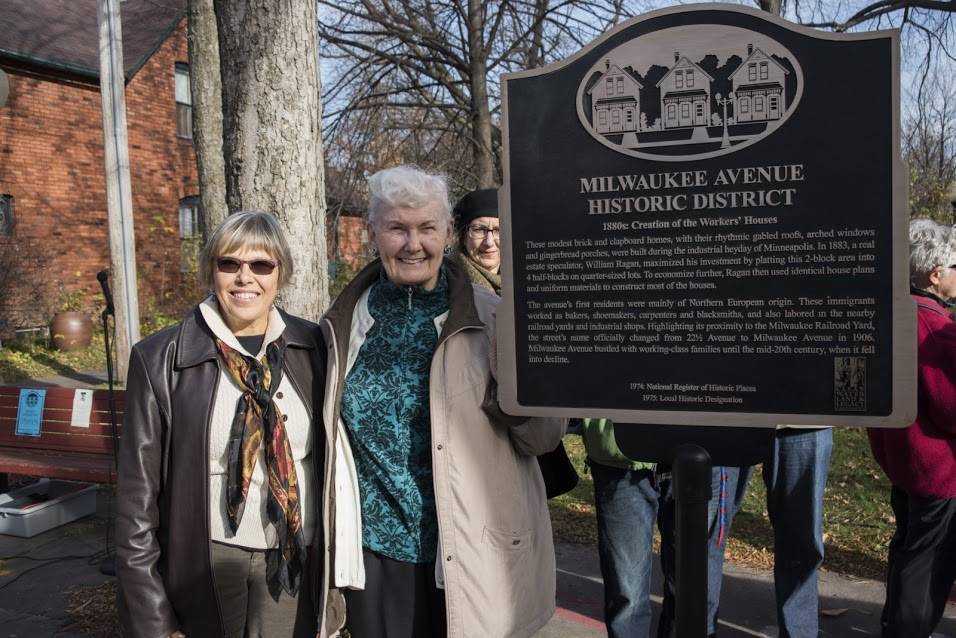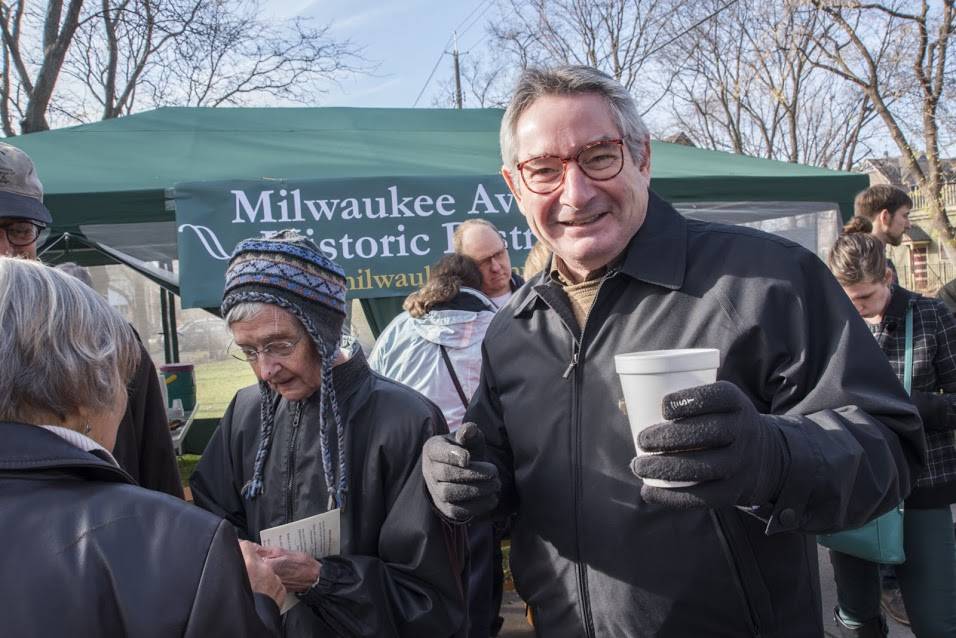Did you know Milwaukee Avenue has three historic designations – local, state and national?
The official district name is Milwaukee Avenue Historic District and we were designated on the following dates:
- National Register of Historic Places – May 2, 1974
- Local Historic Designation – July 25, 1975
Information about the district and its historic homes can be found on the Minnesota Historical Society database.
The City of Minneapolis Heritage Preservation Commission also provides information on the district.
On November 14, 2015, the Milwaukee Avenue Homeowners Association dedicated a historic marker. Provided by Legacy funding, the sign reads:
These modest brick and clapboard homes, with their rhythmic gabled roofs, arched windows and gingerbread porches, were built during the industrial heyday of Minneapolis. In 1883, a real estate speculator, William Ragan, maximized his investment by platting this 2-block area into 4 half-blocks on quarter-sized lots. To economize further, Ragan then used identical house plans and uniform materials to construct most of the houses.
The avenue’s first residents were mainly of Northern European origin. These immigrants worked as bakers, shoemakers, carpenters and blacksmiths, and also labored in the nearby railroad yards and industrial shops. Highlighting its proximity to the Milwaukee Railroad Yard, the street’s name officially changed from 221⁄2 Avenue to Milwaukee Avenue in 1906. Milwaukee Avenue bustled with working-class families until the mid-20th century, when it fell into decline.
By the 1960s, generations of heavy use had taken a toll on the houses. Fewer families remained. Many homes became rental properties for students and artists. As front porches were enclosed and deteriorated brick was covered with stucco, the area’s architectural integrity further diminished. A 1970s urban renewal plan called for demolishing nearly 70 percent of the housing in the surrounding neighborhood, including every home along Milwaukee Avenue.
A grassroots group, the Seward West Project Area Committee, fought to preserve Milwaukee Avenue and won its listing on the National Register of Historic Places. With public agency funding and their own sweat and labor, homeowners restored the houses. The narrow street became a pedestrian way. Today, Milwaukee Avenue serves as a Seward Neighborhood landmark and a unique example of Minnesota’s social heritage.


